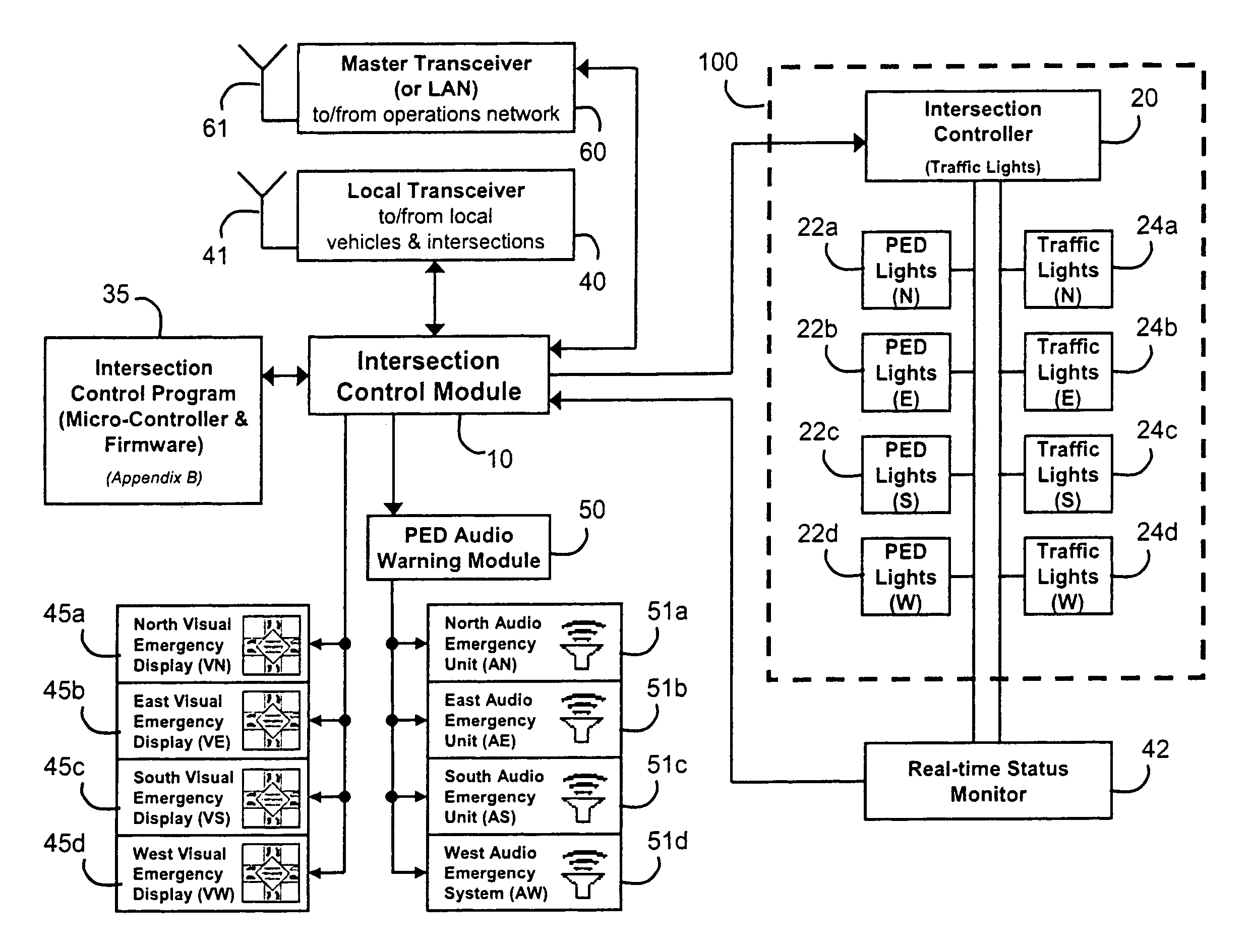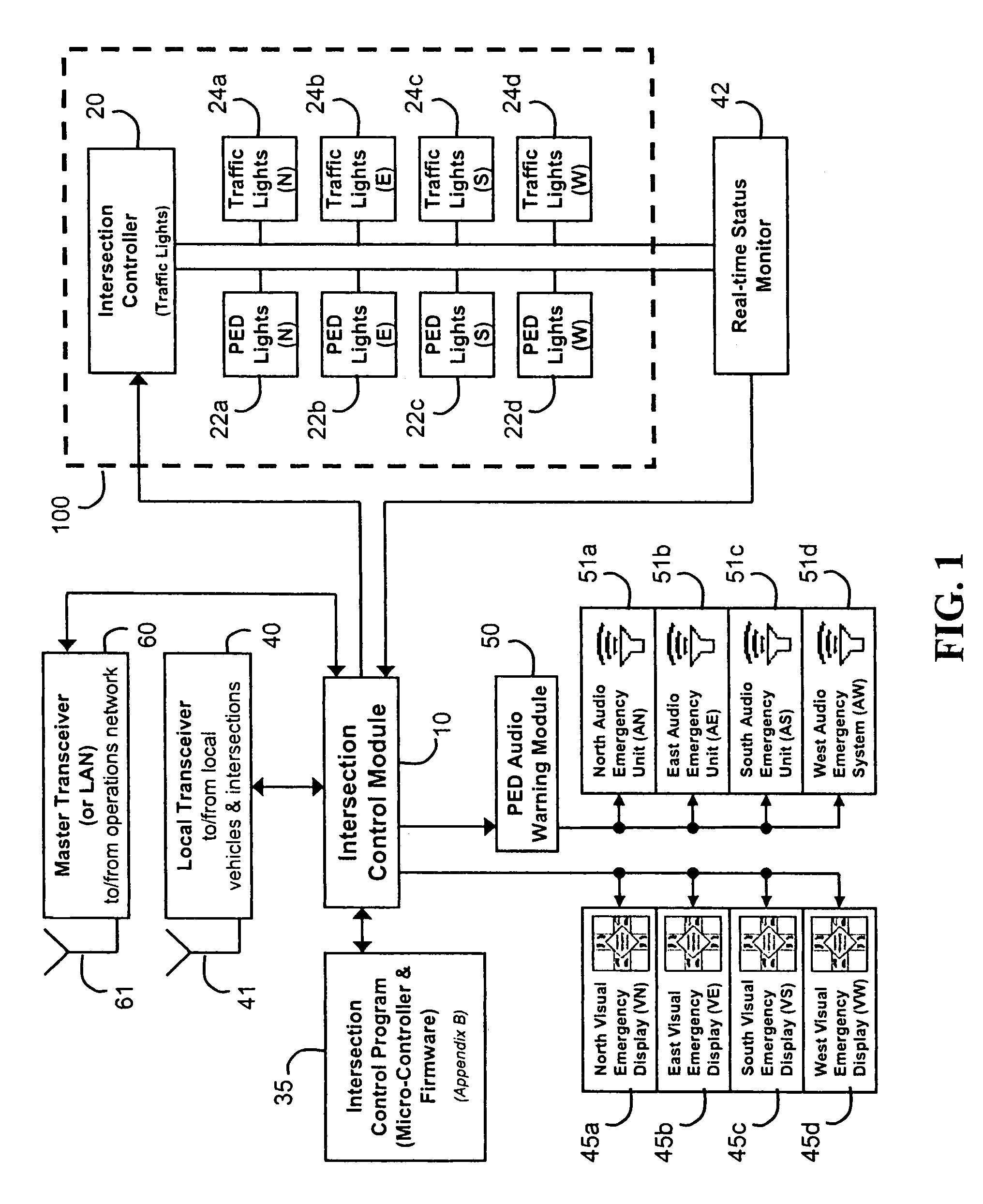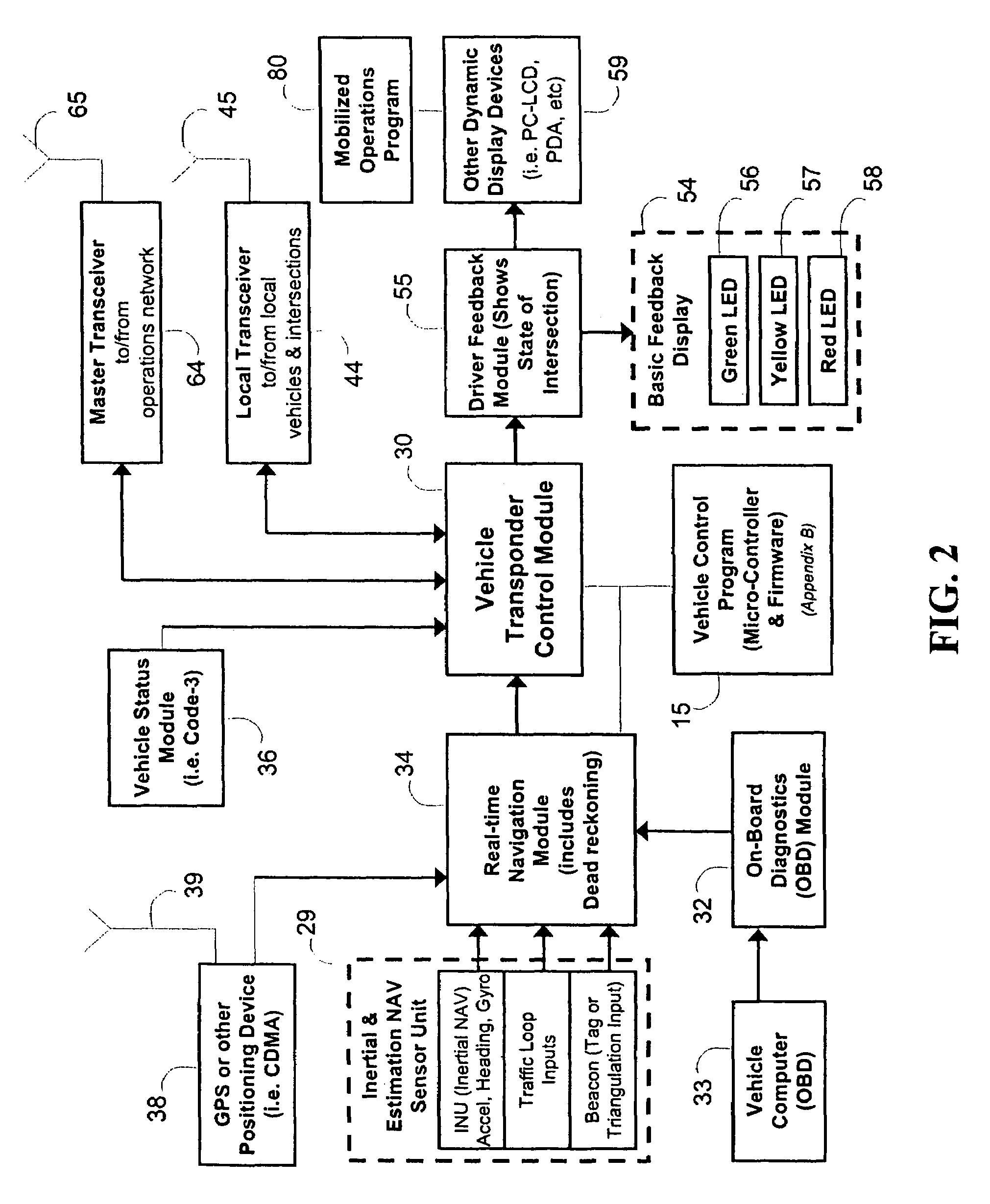Emergency vehicle traffic signal preemption system
a technology for emergency vehicles and traffic signals, applied in vehicle position/course/altitude control, process and machine control, instruments, etc., can solve the problems of severe operational limitations, severe disruption of the normal phasing pattern of traffic controllers, and present systems used to preempt traffic signals and clear intersections for emergency vehicles responding to life-saving events often come with severe limitations, etc., to achieve the effect of sufficient tim
- Summary
- Abstract
- Description
- Claims
- Application Information
AI Technical Summary
Benefits of technology
Problems solved by technology
Method used
Image
Examples
Embodiment Construction
[0052]The three major subsystems in the emergency vehicle traffic signal preemption system are shown in FIG. 5: the vehicle transponder 200, the intersection hardware 230, and the communications and operations network 260.
[0053]The vehicle transponder 200 is composed of three main components. First, the vehicle computer interface module 205 includes the on-board diagnostics circuit and the emergency priority code interface. Second, the navigation predict module 210 uses navigation sensors such as GPS and INU (inertial NAV unit) sensors to generate both absolute and estimated dead reckoning position reports. Third, the transponder control module 215 provides an interface to the e-operator via LEDs, PC display, or PDA device.
[0054]The intersection hardware 230 is composed of three main components. First, the intersection monitor module 235 provides real-time reading and logging of controller signal and pedestrian phasing and timing. Second, the intersection control module 240 performs...
PUM
 Login to View More
Login to View More Abstract
Description
Claims
Application Information
 Login to View More
Login to View More - R&D
- Intellectual Property
- Life Sciences
- Materials
- Tech Scout
- Unparalleled Data Quality
- Higher Quality Content
- 60% Fewer Hallucinations
Browse by: Latest US Patents, China's latest patents, Technical Efficacy Thesaurus, Application Domain, Technology Topic, Popular Technical Reports.
© 2025 PatSnap. All rights reserved.Legal|Privacy policy|Modern Slavery Act Transparency Statement|Sitemap|About US| Contact US: help@patsnap.com



